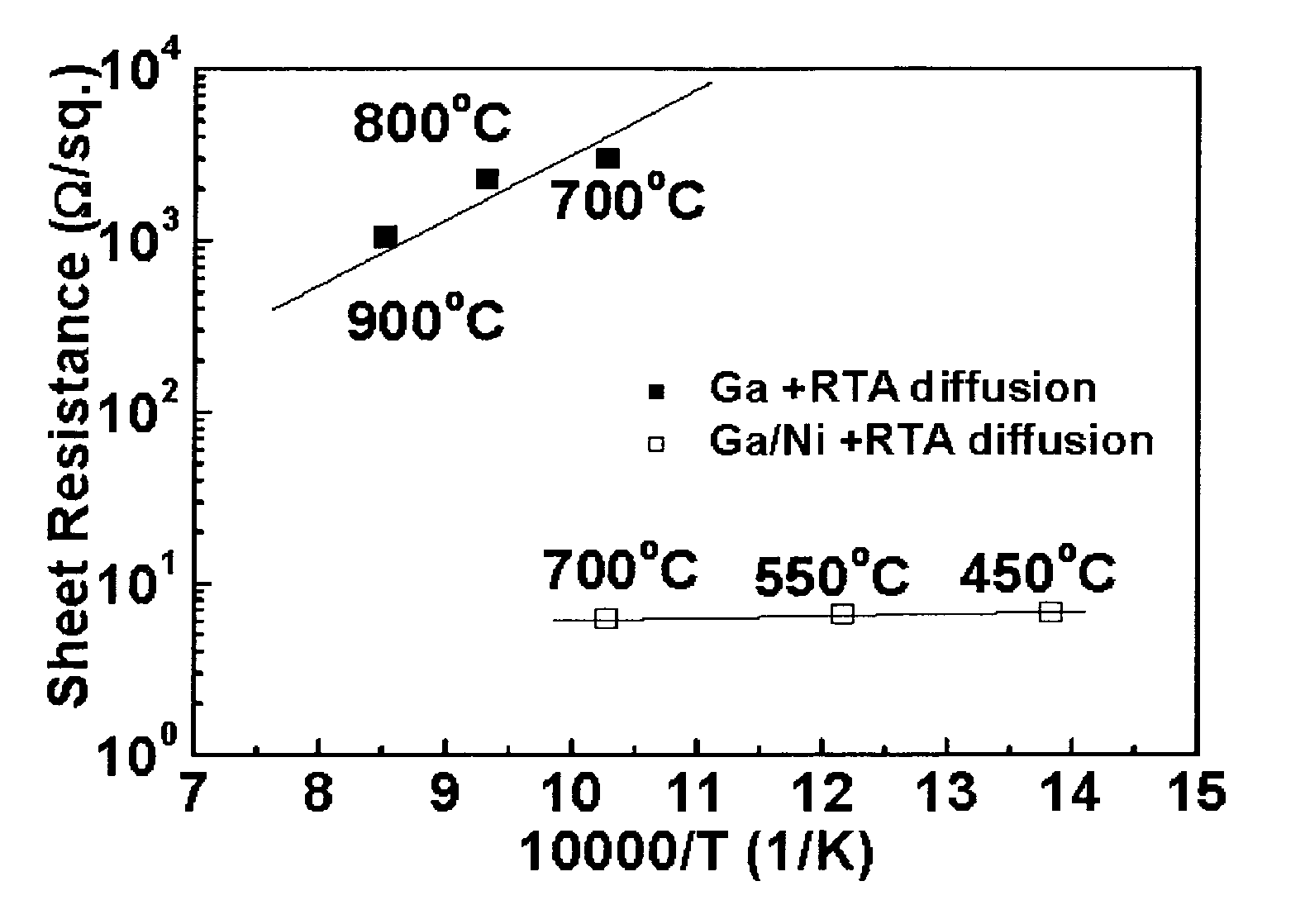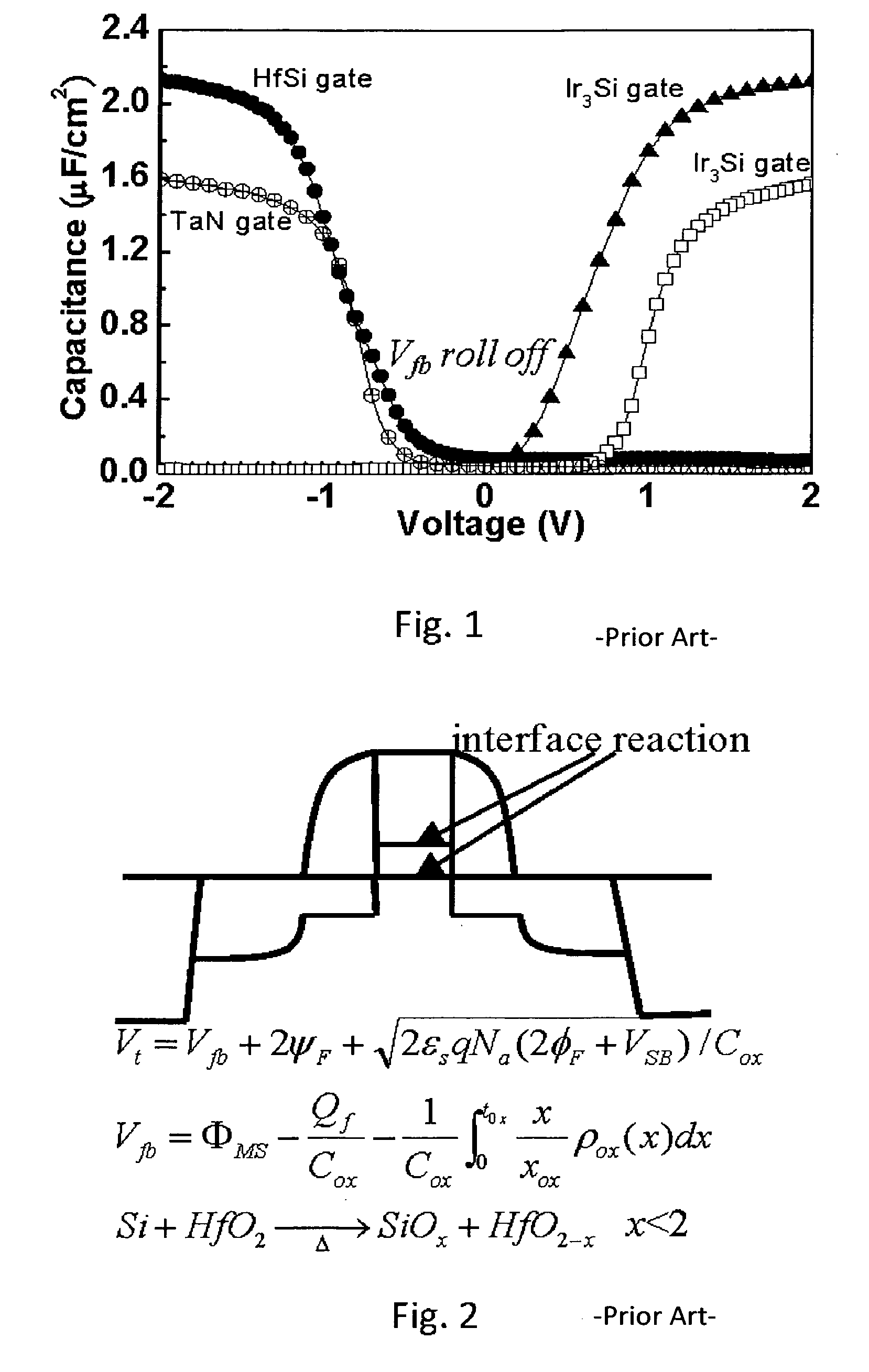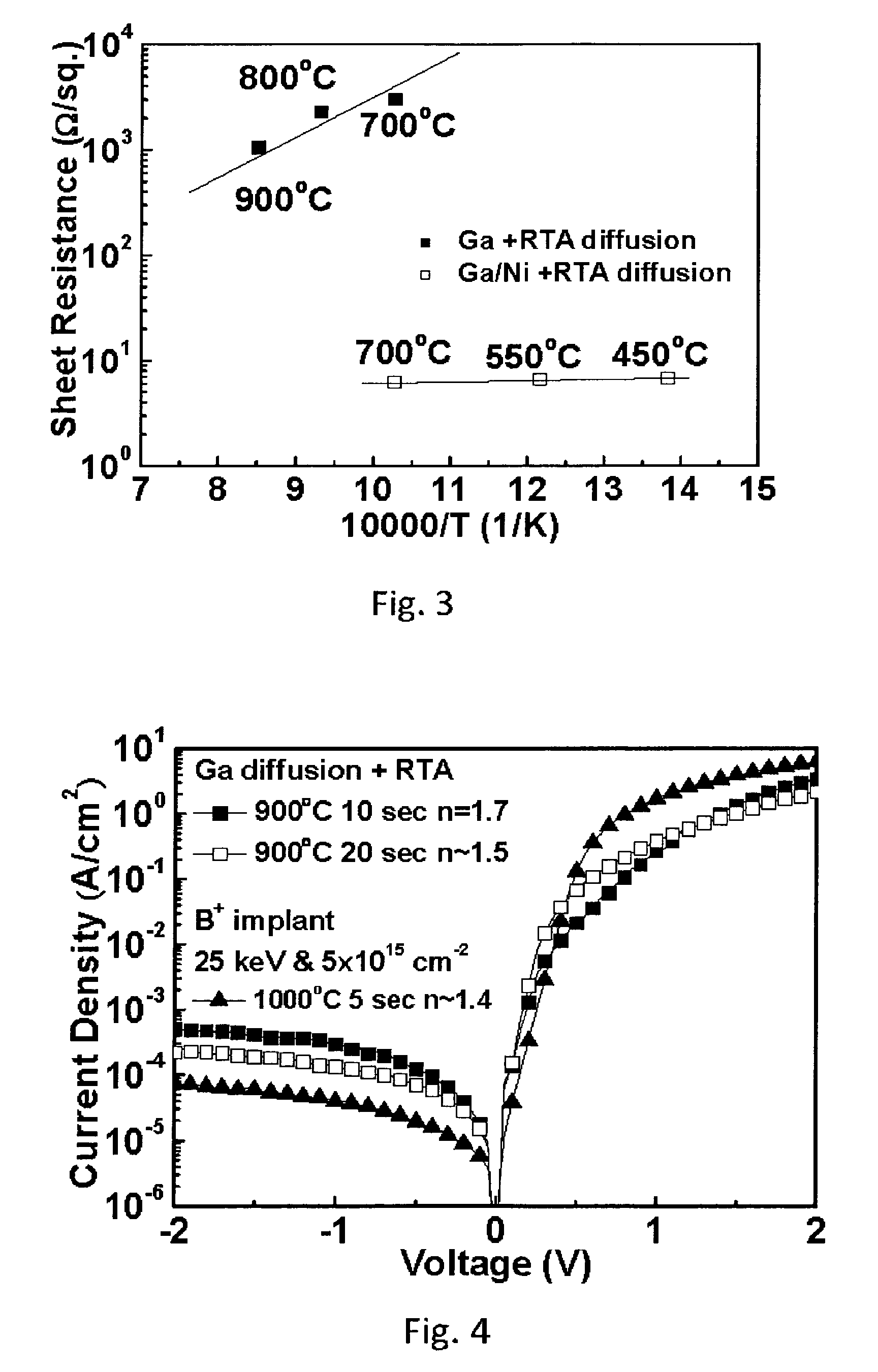Method for making very low Vt metal-gate/high-k CMOSFETs using self-aligned low temperature shallow junctions
a low-temperature shallow junction and metal gate technology, applied in the direction of basic electric elements, electrical apparatus, semiconductor devices, etc., can solve the problems of undesirable high vsub>t/sub>, difficult choice of appropriate metal gate for p-mos, and reduced flat-band voltage (vsub>fb/sub>) of these devices, so as to reduce the defect-assisted diffusion and high mobility of 90
- Summary
- Abstract
- Description
- Claims
- Application Information
AI Technical Summary
Benefits of technology
Problems solved by technology
Method used
Image
Examples
Embodiment Construction
[0040]For the best understanding of this invention, please refer to the following detailed description of the preferred embodiments and the accompanying drawings.
[0041]This invention proposes a method for making very low Vt metal-gate / high-κ CMOSFETs using self-aligned low temperature shallow junctions. The metal-gate / high-κ CMOSFETs process included depositing high-κ HfLaO using PVD [1]*, a post-deposition anneal, and TaN / Ir and TaN / Hf deposition. After gate patterning, self-aligned 5 nm Ga or 10-nm-Ni / 5-nm-Ga (with top 100 nm SiO2 capping layer) was deposited for p-MOS, followed by 550˜900° C. RTA solid-phase diffusion (SPD). For n-MOS, self-aligned H3PO4 was spun deposited, transformed to P2O5 at 200° C. and SPD at 850˜900° C. RTA. Such wet H3PO4 spray and doping processes are used for commercial Si solar cell manufacture. Alternatively, similar to p-MOS case, the source-drain contact of n-MOS can also be formed by Ni / Sb SPD at 600˜700° C. Finally, source-drain metal contacts wer...
PUM
 Login to View More
Login to View More Abstract
Description
Claims
Application Information
 Login to View More
Login to View More - R&D
- Intellectual Property
- Life Sciences
- Materials
- Tech Scout
- Unparalleled Data Quality
- Higher Quality Content
- 60% Fewer Hallucinations
Browse by: Latest US Patents, China's latest patents, Technical Efficacy Thesaurus, Application Domain, Technology Topic, Popular Technical Reports.
© 2025 PatSnap. All rights reserved.Legal|Privacy policy|Modern Slavery Act Transparency Statement|Sitemap|About US| Contact US: help@patsnap.com



